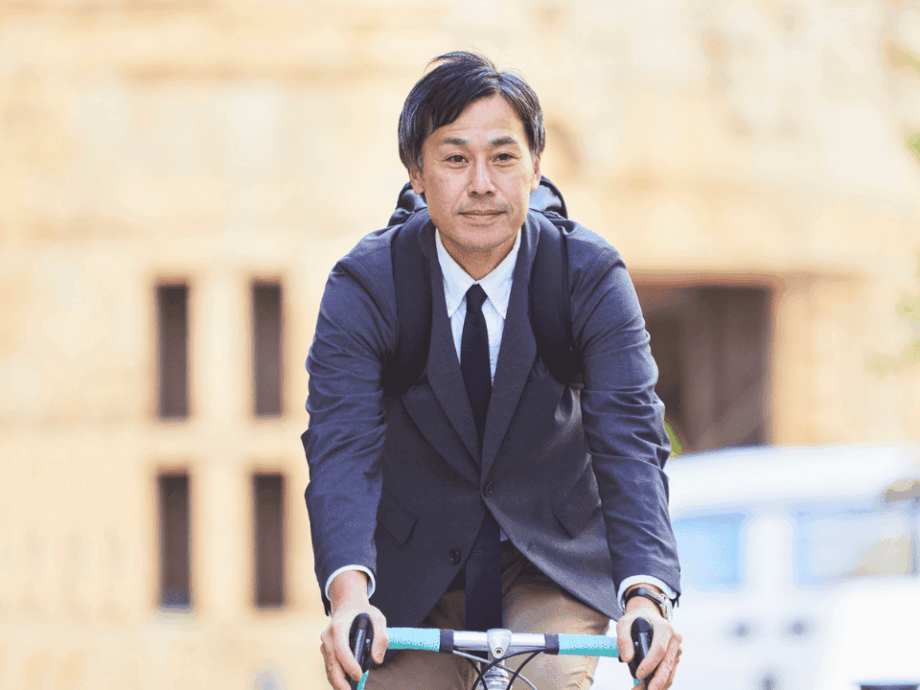Why Japan is changing bicycle rules now
Japan will begin issuing blue ticket fines to cyclists for a wide range of minor traffic violations on April 1, 2026. The National Police Agency has published a new rulebook for riders to explain what will be enforced and how much each breach will cost. The change is designed to curb risky behavior that has crept into everyday cycling and to make enforcement more consistent on busy streets in cities and towns across the country.
- Why Japan is changing bicycle rules now
- What the blue ticket system does
- Red tickets and criminal penalties remain for serious cases
- Sidewalks, bike lanes and where you are allowed to ride
- What will be ticketed on the spot
- Duties for drivers around cyclists
- How fines are paid and how to contest a ticket
- Why the government is acting now
- Practical tips for riding legally and safely
- Key Points
Under the system, people aged 16 or older can be fined between 3,000 and 12,000 yen for offenses such as using a phone while riding, ignoring traffic signals, riding the wrong way on a one way street, or weaving through pedestrians on sidewalks. Police say first time minor cases will usually prompt guidance or a warning, then repeat offenders or riders who create danger will receive tickets. Paying the fine ends the matter without criminal punishment.
The most dangerous acts will draw an immediate blue ticket. Using a smartphone while riding carries a fine of 12,000 yen (about 80 to 85 dollars). Entering a railroad crossing when the barrier is down or alarms are sounding is 7,000 yen (about 48 dollars). Failing to stop at a railroad crossing is 6,000 yen. The agency says these behaviors can trigger severe crashes, so they will be handled on the spot.
Officials have moved in this direction after years of mixed outcomes under the previous approach, which relied heavily on verbal warnings or, at the other extreme, criminal cases for only the most serious misconduct. Police data cited by major outlets show that bicycle crashes remain stubbornly high. Smartphone related cycling crashes rose from 295 cases in the five years from 2013 to 2017 to 454 in the following five year period. During 2024 there were more than 67,000 bicycle related traffic accidents nationwide, and local reporting attributes a large share of fatal cases to cyclists breaking traffic rules.
What the blue ticket system does
A blue ticket is an administrative traffic fine issued on the street. It mirrors the process already used for car and moped violations, and it fills the gap between a simple warning and a criminal case. Cyclists who accept the ticket pay a fixed amount and are not indicted. If they refuse to pay or miss the deadline, prosecutors can take the case to court. The National Police Agency lists 113 bicycle violations that fall under the blue ticket system.
How big are the fines
Fine amounts vary by offense, generally from 3,000 to 12,000 yen. Examples reported by police and major outlets include:
- Using a smartphone while riding: 12,000 yen (about 80 to 85 dollars)
- Entering a railroad crossing while the barrier is down or alarms are sounding: 7,000 yen (about 48 dollars)
- Failing to stop at a railroad crossing: 6,000 yen (about 41 dollars)
- Ignoring a traffic light: 6,000 yen
- Riding the wrong way on a road: 6,000 yen
- Riding on sidewalks where not permitted, or riding fast and impeding pedestrians: 6,000 yen
- Failing to stop at stop signs: 5,000 yen
- Riding without a light at night or in poor visibility: 5,000 yen
- Holding an umbrella while riding or listening to music with earphones: 5,000 yen
- Riding a bicycle without working brakes or using a fixed gear bicycle without brakes: 5,000 yen
- Obstructing an emergency vehicle: 5,000 yen
- Riding side by side: 3,000 yen
- Carrying a passenger on a standard bicycle: 3,000 yen
When will police issue tickets
Police say they will usually begin with instruction or a warning for a first minor offense. A blue ticket will be issued if a rider ignores guidance, repeats the violation, or creates danger to others. The agency has singled out three behaviors for immediate ticketing because of their risk: using a phone while riding, riding a fixed gear bicycle without brakes, and violating railroad crossing rules. The system applies to people aged 16 and older.
Red tickets and criminal penalties remain for serious cases
The blue ticket does not replace criminal enforcement. Serious offenses still result in a red ticket and a criminal investigation that can lead to prosecution. In late 2024 Japan revised the Road Traffic Act to strengthen penalties for two types of dangerous cycling that have led to severe crashes: using a mobile phone in a way that endangers traffic, and riding under the influence of alcohol. For phone use that endangers traffic, riders face up to six months in prison or a fine of up to 100,000 yen. If the behavior causes a crash, the maximum rises to one year in prison or up to 300,000 yen. Drunk riding can lead to stronger charges. With a breath alcohol concentration of 0.15 milligram per liter or more, riders face up to three years in prison or a fine of up to 500,000 yen. The more severe offense of cycling while drunk remains punishable by up to five years in prison or a fine of up to 1 million yen.
Police have not waited for the blue ticket rollout to pursue egregious cases. After the 2024 revision took effect, Osaka police reported cases against intoxicated riders, and other prefectures have investigated incidents involving phones. Authorities also say tailgating and serious violations that cause an accident will be handled as criminal cases. The message is that a blue ticket is for minor conduct, while reckless and harmful conduct still belongs in criminal court.
Sidewalks, bike lanes and where you are allowed to ride
Japan treats bicycles as vehicles, so the default rule is to ride on the road, keeping to the left as much as possible. Sidewalk riding is allowed only in specific situations. Cyclists may use sidewalks where signs indicate bicycle use, if the rider is under 13, if the rider is 70 or older, or if the rider has certain physical disabilities. Riding on the sidewalk is also permitted if traffic conditions on the road are unsafe. When using a sidewalk, cyclists must ride slowly, yield to pedestrians, and keep to the side nearest the road. Even on sidewalks that have a marked bicycle portion, slow riding is still required. Police guidance has suggested a safe sidewalk speed of about 7.5 kilometers per hour.
Why sidewalk rules are controversial
The sidewalk issue has prompted the strongest public reaction. During the comment period, the government received nearly 6,000 submissions, and more than 4,000 focused on sidewalk use and safety. Many riders say roads are narrow, bike lanes are inconsistent, and parked vehicles often block space meant for bicycles. Some districts in Tokyo have added better facilities, including separated lanes and wider paths, but the network remains fragmented, which is why so many people ride on sidewalks.
Police have tried to calm fears by emphasizing discretion. The agency has said it will reserve blue tickets for dangerous sidewalk riding, such as speeding around pedestrians, forcing people aside, or ignoring officer warnings. In guidance released with the rulebook, the National Police Agency explained the aim clearly.
“We mainly intend to impose fines for malicious and dangerous acts, such as ignoring warnings or causing accidents.”
The policy gives officers room to respond to conditions on the ground. It also encourages riders to slow down on sidewalks and choose the road when it is safe to do so.
What will be ticketed on the spot
Three violations will be treated as instant ticket offenses because of the risk they pose to riders and to others. Using a phone while cycling will draw a 12,000 yen fine. Riding a fixed gear bicycle without brakes will draw a 5,000 yen fine. Railroad crossing violations will be handled quickly, with a 6,000 yen fine for failing to stop and 7,000 yen for entering while a barrier is down or an alarm is sounding. Police say these behaviors can create catastrophic collisions in a matter of seconds, which is why officers will not wait to issue a warning first.
Duties for drivers around cyclists
The law changes also spell out responsibilities for motorists. Drivers must pass bicycles at a safe distance and speed, a standard that is common in Europe and other regions. Police can fine drivers who fail to give space, with reports placing penalties in the range of roughly 5,000 to 9,000 yen depending on vehicle type. Some coverage cites a 7,000 yen penalty as typical. The safer passing rule is designed to make it more comfortable for cyclists to stay on the road, which should in turn reduce sidewalk riding.
How fines are paid and how to contest a ticket
Blue ticket fines must be paid within eight days. Payment is usually made at a bank or post office using the slip provided by the officer. If you pay on time, you avoid indictment. If you do not pay or you want to contest the charge, the case can move to court, where a judge decides the outcome. The process mirrors the system for drivers. Travelers and foreign residents should know the rules also apply to them, so it makes sense to ask a bike rental shop for a short briefing before heading out. The police rulebook is available in Japanese on the National Police Agency website, and local governments often publish multilingual safety guides for residents and visitors. You can find the agency home page at the NPA website.
Why the government is acting now
Bicycles are essential for daily life in Japan, from commuting to shopping to school drop offs. The rise of bike sharing and the shift away from crowded trains during the pandemic brought even more riders onto the streets. Police and safety experts point to worrying trends behind the new fines. Traffic violations by cyclists increased from about 7,000 in 2013 to more than 24,000 in 2022. Reports say that more than 80 percent of fatal crashes involving bicycles have involved a violation by the cyclist. Smartphone use while riding has grown into a major risk factor. Police count at least 25 cases of death or serious injury from cyclist phone use since 2021. There are around 100 severe crashes each year involving intoxicated cyclists. The new blue ticket tool is meant to enforce basic rules early and to keep serious cases in the criminal system where prosecutors can act.
Practical tips for riding legally and safely
The new fines do not change the basics of safe cycling, but they will make poor habits costly. A few practical steps can keep you on the right side of the rules and protect people around you.
- Keep to the left on the road and use bicycle lanes where they exist
- Do not use your phone while riding, even for map checks or quick messages
- Never ride after drinking alcohol
- Use a front light and a rear reflector at night or in poor visibility, and keep your brakes in good working order
- Do not hold an umbrella or listen to music with earphones while riding
- On sidewalks, ride slowly, stay on the side nearest the road, and always yield to pedestrians
- Obey traffic lights and stop at stop signs
- Avoid riding side by side and do not carry another person unless the bike is built and permitted for it
- If carrying young children, use approved child seats and follow age rules. People under 16 cannot carry a young child
- Wear a helmet. It is required for children and strongly encouraged for everyone else
- Tourists should ask rental shops for a quick rules overview and carry identification and the payment slip if you receive a ticket
Key Points
- Blue ticket fines for cyclists begin nationwide on April 1, 2026
- Fines range from 3,000 to 12,000 yen for 113 listed violations
- Using a phone while riding draws a 12,000 yen fine and will be ticketed immediately
- Railroad crossing breaches are 6,000 to 7,000 yen and will be handled on the spot
- Sidewalk riding is limited and must be slow and pedestrian first, with fines for dangerous behavior
- People aged 16 and older are subject to blue tickets. Paying avoids indictment
- Serious misconduct still brings red tickets and criminal penalties, including for drunk riding
- Drivers must pass cyclists at a safe distance and speed or face fines
- Police say enforcement will focus on malicious and dangerous acts rather than casual mistakes
- The rulebook is published on the National Police Agency website in Japanese




